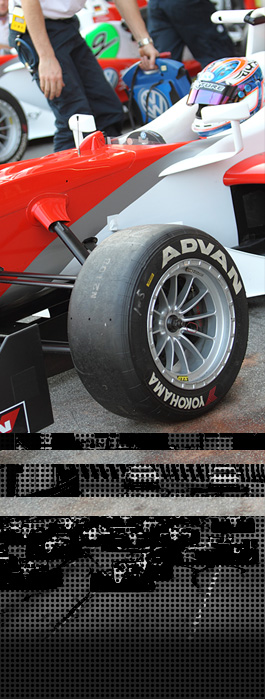 |
 |
 |
 |
 |
 |
 |
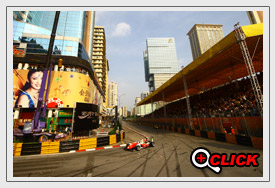
Many world heritage historic buildings, the exotic streetscape and the sleepless casinos that are collectively referred to as Las Vegas of the East...
It takes just about an hour by the high speed liner from Hong Kong to Macau. Even after the return to China in 1999, the ex-Portuguese settlement still abounds in tourists from all over the world.
The Macau Special Administrative Region consists of the Macau peninsula, the islands of Taipa and Coloane, and the reclaimed land between the islands. In the third weekend of November every year, the region becomes the venue of feverish motor sport activities.
That is the Macau Grand Prix.
As per tradition, the world famous motor sport event since 1954 has been held in the third week of November and it is 15th Thursday to 18th Sunday this year. For this period, Macau becomes devoted completely to motor sport activities, amid a sea of Yokohama Tire's well-known branding color scheme.
|
 |
 |
 |
Currently feature events of the weekend are Formula 3 Grand Prix and Guia Race of Macau. (For the detailed history of Macau Grand Prix, see the related page in this web site.) Formula 3 is one of the globally common formulae of single seat race car and many countries and regions have their own championships. The Guia Race is a round of the FIA World Touring Car Championship series since 2005. These two top are supported by several other categories, including the equally prestigious Macau Motorcycle Grand Prix.
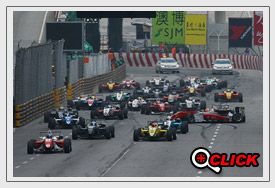 But the climax of the weekend is the Formula 3 race above all. The top ranking drivers of national and regional F3 championships sign up for the race to fight for the glory and the FIA Intercontinental Cup title. You will see the international line up of contenders from the British, German and Japanese F3 championships, as well as Euro F3 series, on the already announced 2012 edition of entry list, so the race truly deserves its other name, the race of F3 champions from around the world.
As you may know, Formula 3 is one of the single seater categories for closed race tracks and only next to F2 and GP2 below the pinnacle of them, Formula One. The standardized regulations for the car are set by the world sanctioning body of motor sport, FIA (Federation Internationale de l'Automobile).
Although the suppliers of chassis and engines may be different, all national and regional championships adopt these standardized regulations. This makes the mutual exchange of competitors between the championships easier, which is the main feature of Formula 3. The same applies to Macau Grand Prix. The competitors are allowed to take their own cars as are used in the respective national championships for this "race of the champions."
The central players in this category are the aspiring young drivers who are trying to make their ways into other professional categories higher in the motor sport hierarchy and ultimately into Formula One. Given the huge attention to Macau Grand Prix from fans and those involved in motor sport industries, this can be an ideal opportunity for the drivers to get a big boost to their career.
As a matter of fact, not a few drivers achieved the ultimate goal and got into Formula One, after showing a brilliant performance in Macau. For example, the race winner in 1983, the first year Macau Grand Prix had adopted Formula 3 for its main event, later became the three times Formula One world champion and the legend of the sport. This was the late Ayrton Senna.
|
 |
 |
 |
The best part of Formula 3 Macau Grand Prix is for sure the fierce fight between the aspiring young lions but the race track itself, provided as the battlefield for them, is also incredibly challenging.
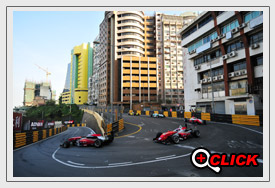 If you arrive at Macau by Wednesday of the race week, you will see a main road with a lot of traffic of taxis and other vehicles, as soon as you get out of the ferry landing. You won't need a guide to know this is one of the main thoroughfares of the city's busy downtown because there are some large hotels, including Hotel Lisboa which is famous by its casino, along the road.
But the picture completely changes on Thursday. The roads are closed and that busy traffic just disappears. And now, instead of the taxis and other vehicles, the race cars run on the road, thundering very loud exhaust noise.
So, yes, Macau Grand Prix is run on the temporary street track built on the closed public roads. Consequently, the track is restricted between the metal guard rails on both sides and there is virtually no escape zone beside corners, usually seen on permanent race circuits. It doesn't allow for any driving mistakes and the drivers must survive in these harsh circumstances first while fighting against their opponents.
The 6,117 meter track can be divided into two sections; the wider ocean side section and the very technical mountain section. Because the ocean side uses one of the main roads, the track is wide and mostly straight except for only a few corners and bends in this section. There you will see some slip streaming tactics and overtaking after side by side battles. In contrast, the mountain section consists of very narrow roads running through the residential area, so overtaking in this section, particularly for open wheel cars, is risky or simply impossible.
Because of this track layout, the Lisboa corner, which is at the end of ocean side and thus the beginning of the mountain section, is considered as the most important spot. As this is the first tight corner of the lap, every driver rushes into it to get a better position for the mountain section, particularly on the opening lap, and this often results in a multi-car pile ups.
|
 |
 |
 |
Since the Macau Grand Prix introduced the Formula 3 cars for its feature race in 1983, Yokohama has consistently supported the event as the sole supplier of the single spec ADVAN racing tires that are the essential tool for the young drivers' battles. And 2012 is the 30th anniversary year of this longtime cooperation.
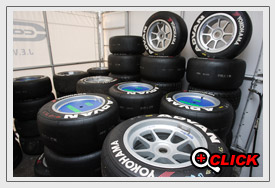 Unlike permanent race tracks, the track surfaces in Macau have a lower coefficient of friction and drainage cambers to both sides which are typical of public roads. Therefore, the tires must have excellent controllability and durability, retaining a good adhesion as well. On top of this, certain considerations must be paid not to give an unfair advantage to any competitor because the national F3 championships are run with the control tires from different suppliers.
By meeting these complicated requirements, Yokohama Tire has earned the trust from the drivers and teams for its products through the long history of the event. The 30 year continuation of tire supply contract speaks for itself about the race organizes' confidence for and the technical strength of Yokohama Tires.
Besides the tire's performance level itself, the quality control of large number of tires and the logistics capability to meet the event's schedule, as well as the good on-site service to the teams, are also important factors to win the race organizers' trust.
Apart from its technical role as the sole tire supplier, Yokohama Tire has also become one of major players in the promotional activities to add excitement to the event in close cooperation with the organizers. During the race weekend, you will see a large number of YOKOHAMA signage everywhere across the track and the city of Macau, which boosts the air of excitement for the legendary race event with Yokohama's branding color scheme.
|
|
 |
 |
 |
|
|
 |
|